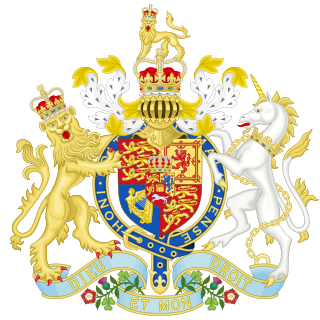| |||||
| Decades: | |||||
|---|---|---|---|---|---|
| See also: | |||||
The following lists events that happened during 1814 in Australia.
| |||||
| Decades: | |||||
|---|---|---|---|---|---|
| See also: | |||||
The following lists events that happened during 1814 in Australia.

The Supreme Court of New South Wales is the highest state court of the Australian State of New South Wales. It has unlimited jurisdiction within the state in civil matters, and hears the most serious criminal matters. Whilst the Supreme Court is the highest New South Wales court in the Australian court hierarchy, an appeal by special leave can be made to the High Court of Australia.

The Supreme Court of Tasmania is the highest State court in the Australian State of Tasmania. In the Australian court hierarchy, the Supreme Court of Tasmania is in the middle level, with both an appellate jurisdiction over lower courts, and decisions made by Court to be heard on appeal by the High Court of Australia.

John Piper was a military officer, public servant and landowner in the colony of New South Wales. The Sydney suburb of Point Piper was named in his honour.
The following lists events that happened during 1803 in Australia.
The following lists events that happened during 1804 in Australia.
The following lists events that happened during 1807 in Australia.
The following lists events that happened during 1808 in Australia.
The following lists events that happened during 1812 in Australia.
The following lists events that happened during 1824 in Australia.
The following lists events that happened during 1817 in Australia.
The following lists events that happened during 1823 in Australia.
The following lists events that happened during 1825 in Australia.

The New South Wales Act 1823, or New South Wales Jurisdiction Bill, was an Act of the Parliament of the United Kingdom, which established the New South Wales Legislative Council and the Supreme Court of New South Wales, in addition to the Supreme Court of Van Diemen's Land.
The Court of Civil Jurisdiction was a court established in the late 18th century, in the colony of New South Wales which subsequently became a state of Australia. The court had jurisdiction to deal with all civil disputes in the then fledgling colony. It was in operation between 1788, the date of establishment of the new colony, and 1814.
The Governors Court was a court established in the early 19th century in the colony of New South Wales. The colony was subsequently to become a state of Australia in 1901. The court had jurisdiction to deal with civil disputes where the amount in dispute in the colony was not more than £50 sterling. The Supreme Court of New South Wales replaced the court in 1823 when the Supreme Court was created by the Third Charter of Justice.
The Lieutenant Governor's Court was a court established in the early 19th century in the colony of Van Diemen's Land which subsequently became Tasmania, a state of Australia. The court had jurisdiction to deal with civil disputes where the amount in dispute was not more than £50 sterling in the colony. The establishment of the court was the first practical civil court in the settlement. This was an important first step in improving the resolution of civil disputes in the settlement. The Supreme Court of Van Diemen's Land eventually replaced it in 1823 when the court's charter was revoked by the Third Charter of Justice.
The Supreme Court of Civil Judicature of New South Wales was a court established in the early 19th century in the colony of New South Wales. The colony was subsequently to become a state of Australia in 1901. The court had jurisdiction to deal with civil disputes where the amount in dispute in the colony was more than £50 sterling. The Supreme Court of New South Wales replaced the court in 1823 when the Supreme Court was created by the Third Charter of Justice.
The Vice Admiralty Court was a prerogative court established in the late 18th century in the colony of New South Wales, which was to become a state of Australia. A vice admiralty court is in effect an admiralty court. The word "vice" in the name of the court denoted that the court represented the Lord Admiral of the United Kingdom. In English legal theory, the Lord Admiral, as vice-regal of the monarch, was the only person who had authority over matters relating to the sea. The Lord Admiral would authorize others as his deputies or surrogates to act. Generally, he would appoint a person as a judge to sit in the Court as his surrogate. By appointing Vice-Admirals in the colonies, and by constituting courts as Vice-Admiralty Courts, the terminology recognized that the existence and superiority of the "mother" court in the United Kingdom. Thus, the "vice" tag denoted that whilst it was a separate court, it was not equal to the "mother" court. In the case of the New South Wales court, a right of appeal lay back to the British Admiralty Court, which further reinforced this superiority. In all respects, the court was an Imperial court rather than a local Colonial court.
Edward Abbott was a soldier, politician, judge-advocate and public servant who served at Parramatta, the Hawkesbury River and Norfolk Island in the colony of New South Wales, now part of present-day Australia. He also served at the settlements of Launceston and Hobart in Van Diemen's Land, which was part of New South Wales until 1825, when Van Diemen's Land became a self-governing colony.

Kenneth Snodgrass was a Scottish-born soldier and colonial administrator. He acted as lieutenant-governor of Van Diemen's Land and governor of New South Wales for brief periods.